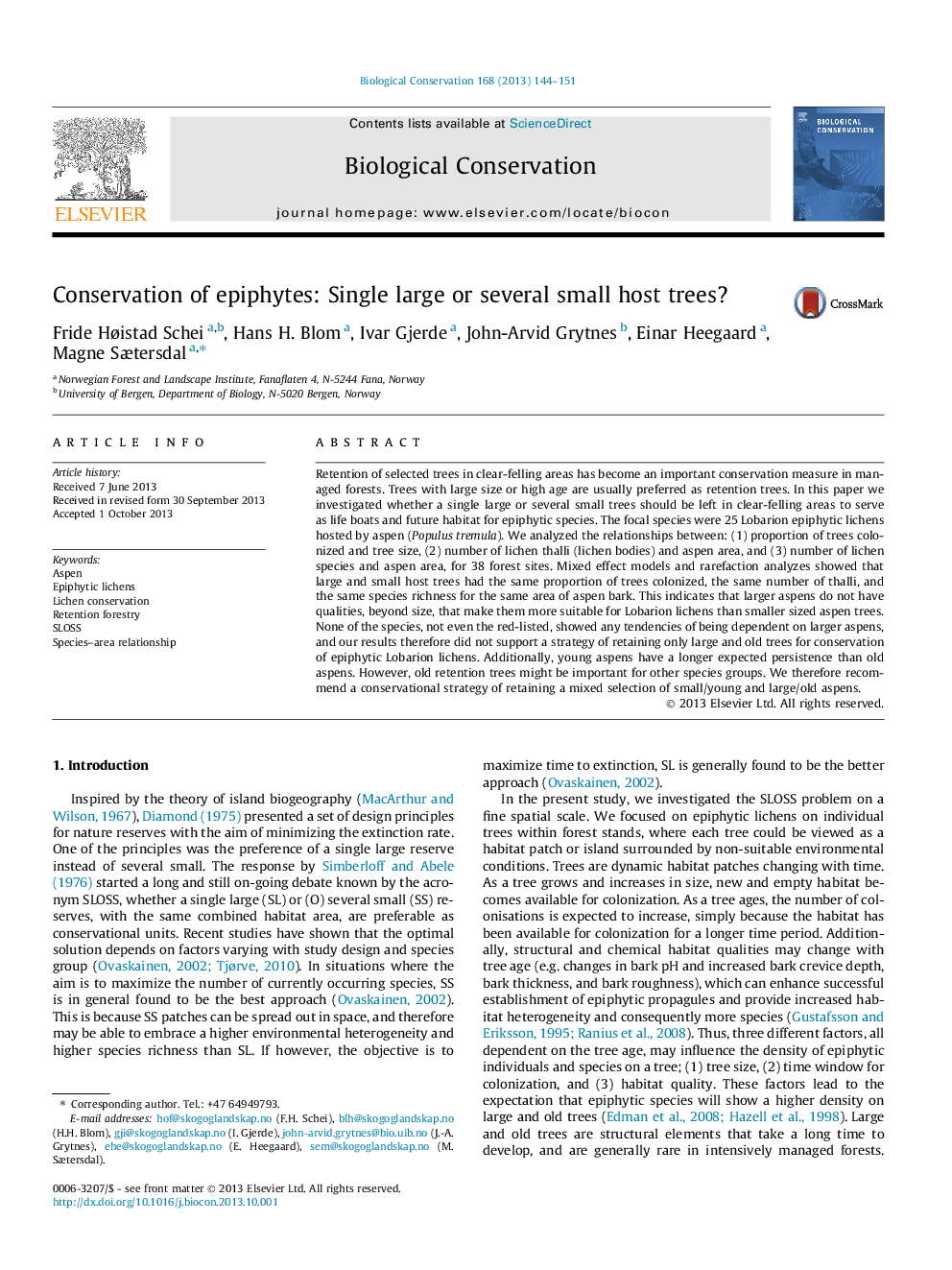| Article ID | Journal | Published Year | Pages | File Type |
|---|---|---|---|---|
| 6300349 | Biological Conservation | 2013 | 8 Pages |
Abstract
Retention of selected trees in clear-felling areas has become an important conservation measure in managed forests. Trees with large size or high age are usually preferred as retention trees. In this paper we investigated whether a single large or several small trees should be left in clear-felling areas to serve as life boats and future habitat for epiphytic species. The focal species were 25 Lobarion epiphytic lichens hosted by aspen (Populus tremula). We analyzed the relationships between: (1) proportion of trees colonized and tree size, (2) number of lichen thalli (lichen bodies) and aspen area, and (3) number of lichen species and aspen area, for 38 forest sites. Mixed effect models and rarefaction analyzes showed that large and small host trees had the same proportion of trees colonized, the same number of thalli, and the same species richness for the same area of aspen bark. This indicates that larger aspens do not have qualities, beyond size, that make them more suitable for Lobarion lichens than smaller sized aspen trees. None of the species, not even the red-listed, showed any tendencies of being dependent on larger aspens, and our results therefore did not support a strategy of retaining only large and old trees for conservation of epiphytic Lobarion lichens. Additionally, young aspens have a longer expected persistence than old aspens. However, old retention trees might be important for other species groups. We therefore recommend a conservational strategy of retaining a mixed selection of small/young and large/old aspens.
Related Topics
Life Sciences
Agricultural and Biological Sciences
Ecology, Evolution, Behavior and Systematics
Authors
Fride Høistad Schei, Hans H. Blom, Ivar Gjerde, John-Arvid Grytnes, Einar Heegaard, Magne Sætersdal,
